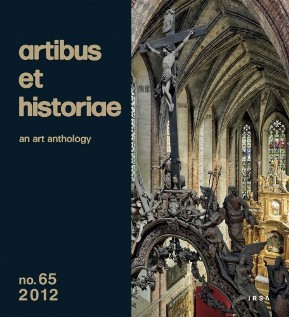 Artibus et historiae, sous-titrée an art anthology, est une revue d’histoire de l’art publiée en Pologne par l’IRSA (Istituto per le Ricerche di Storia dell’Arte) et contenant des articles écrits indifféremment en français, italien, anglais et allemand.
Artibus et historiae, sous-titrée an art anthology, est une revue d’histoire de l’art publiée en Pologne par l’IRSA (Istituto per le Ricerche di Storia dell’Arte) et contenant des articles écrits indifféremment en français, italien, anglais et allemand.
Créée en 1980, elle paraît deux fois par an sous un format relié qui lui donne l’aspect d’un livre plutôt que d’une revue. Elle bénéficie d’une aura prestigieuse en raison de la qualité des textes qu’elle propose. Son comité éditorial est composé de nombreux historiens de l’art connus, originaire de nombreux pays, dont Pierre Rosenberg.
Mal diffusée en France, on peut, pour y souscrire ou commander d’anciens numéros, passer par son site Internet.
Luís Urbano Afonso, Eros et Thanatos : The Tomb of King Pedro in Alcobaça and its Wheel of Life and Fortune (1358–1363)
Peter Weller, A Reassessment in Historiography and Gender : Donatello’s Bronze David in the Twenty-First Century
Marlene Lynette Eberhart, Sensing, Time and the Aural Imagination in Titian’s Venus with Organist and Dog
Aneta Georgievska-Shine, Titian and the Paradoxes of Love and Art in Venus and Adonis
April Oettinger, The Lizard in the Study : Landscape and Otium in Lorenzo Lotto’s Portrait of a Young Man (c. 1530)
Gianni Papi, The Enigma of Angelo Caroselli
Christiane Hille, England’s Apelles and the sprezzatura of Kingship : Anthony van Dyck’s Charles I in the Hunting Field Reconsidered
Mickaël Bouffard, Aristocratic Standing and the Five Positions of French Noble Dance in Portraiture
Bernice Iarocci, Poussin’s Echo and Narcissus : Painting as Lamentation
Brendan Cole, The Mask of Dionysus. A Reinterpretation of Poussin’s Triumph of Pan
Jakub Adamski - The Pseudo-polygonal Rib Vaults, St. James’ Church in Toruń and the Question of Illusionism in Gothic Architecture
